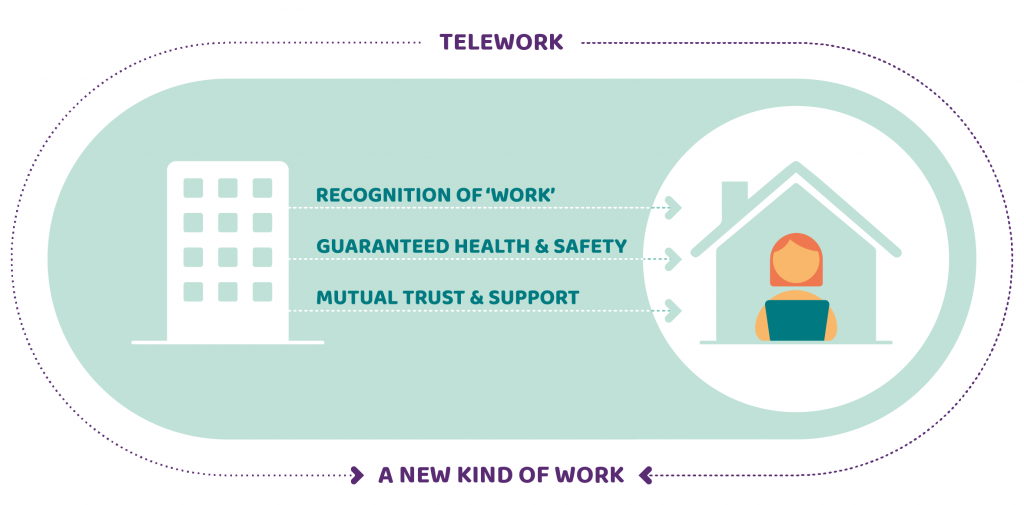Factsheet 8: Telework as a Double-edged Sword
Risks and opportunities
SUMMARY: The COVID-19 crisis led to the rapid and widespread adoption of telework in a multitude of sectors to curb the spread of the virus, while also allowing organisations and companies to continue their activities. This sudden imposition of telework strongly impacted the relationships of people with regards to their jobs and their work-life balance, though these effects, both positive and negative, were not experienced in equal measure across all societal groups. However, while telework can, for instance, reinforce existing gender care and labour gaps, it can also serve as a catalyst for narrowing these gaps.
RESISTIRE’s RECOMMENDATIONS
Unpaid Work is Work
The increased prevalence of telework provides an opportunity to improve the general position of women in the labour market.
(See factsheet 5: Care and Crisis)
Right to Flexible Telework
Because telework might not be in all employees’ best interests, the workers’ right to voluntary telework should be guaranteed, and the concrete implementation of this right should be safeguarded through a legal and regulatory framework.
Right to Disconnect
The ‘right to disconnect’ outside of working hours should fall under the fundamental principle of occupational health and safety for workers.
Worker’s Occupational Health and Safety
While teleworking, workers are still performing their professional activities. As such, all occupational health and safety regulations should apply as much at home (or another remote location) as in the traditional workplace.
Creating a Culture of Trust and Support
A successful telework arrangement depends on an adapted approach to work by the employer.

